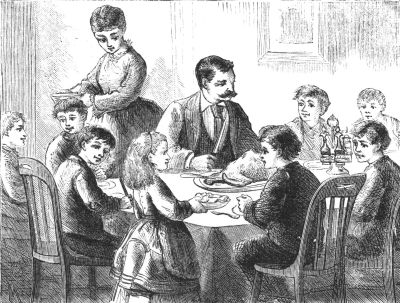Have An Energy Efficient Thanksgiving


By XiaoZhi Lim
BU News Service
Thanksgiving dinner (and football) are the biggest part of today. Americans across the country will be cooking up storms in their kitchen and there will be plenty of turkeys in ovens. In 2011, Americans spent an estimated $25 million on electricity for roasting turkey in an electric oven (not counting people who don’t use electric ovens) alone, according to a report by TXU Energy. This year, pick up a few tips to make your Thanksgiving dinner’s carbon footprint, and utilities bill, smaller.
1. Roast a small turkey
OK that may be difficult given that an average Thanksgiving dinner feeds around ten people. But hear me out. A 10 lb turkey takes about 4 hours in the oven, while a 20 lb turkey takes 6. Electric ovens consume about 2kWh of electricity when used at 350 degrees for an hour, so by cutting down 2 hours of oven cooking time, you save 4 kWh of electricity. To make enough turkey for everyone in your party, add cut up turkey (and you could add more dark or white meat according to your family’s preferences) to the pan. That way, the turkey takes less time to cook and there will be enough meat to go around.
2. Do away with stuffing the bird
Stuffed birds take around thirty minutes to an hour longer to cook than unstuffed ones. Again, reducing oven cooking time is always a good idea, and stuffing is actually safer if prepared outside of the turkey since it eliminates contamination from uncooked meat.
3. Don’t baste. Oil.
A trick provided by a fabulous interactive spread on Essential Thanksgiving by the New York Times: if you oil the turkey, you don’t have to baste it. Not basting means less work for you, and less opening of the oven doors. Each time the oven is opened, the temperature drops up to 25 degrees and the oven then has to work to bring the temperature up again, wasting energy in the process. That also means reduce peeping; use the oven light instead.
4. If you have more appliances than an oven and stove-top, use them.
Especially, the microwave. Microwaves use less than half the energy compared to an oven and usually cook for a shorter time. Some sides can be sped up or cooked entirely in a microwave, like potatoes (pricking them with a fork before putting them in a microwave) and then mashing them. Other appliances, if you have them, like a crock pot (gravy), rice-cooker that can serve as a double boiler (steamed veggies) or toaster oven (toasted bread) can be put to good use while reducing the load on the oven and stove-top.
5. Contain the heat: use a lid.
Lids reduce the time it takes for food to heat up in a pot by containing the heat and not letting it escape. This reduces the amount of time it takes for water to boil, for example. To take things up a notch, pressure cookers trap so much heat that they get the job done much faster: I’ve seen my roommate boil potatoes in her pressure cooker in 10 minutes. Here’s a recipe for 6-minute pressure cooker mashed potatoes if you have one and would like to break it out this Thanksgiving.
There are many other things that you could do to make your Thanksgiving energy efficient, such as using an icebox rather than the refrigerator for drinks (reduces the amount of time your refrigerator is open), turning down the thermostat and letting the oven heat your home and using ceramic or glass pans as they retain heat better. That said, food is energy too, and an estimated 5 million tons of food waste is generated between Thanksgiving and New Year’s in the United States, according to the World Watch Institute. So make all the work you put into today’s celebratory meal count: carve the turkey cleanly, save leftovers and distribute them among your guests, compost food scraps. And above all, have a Happy Thanksgiving!